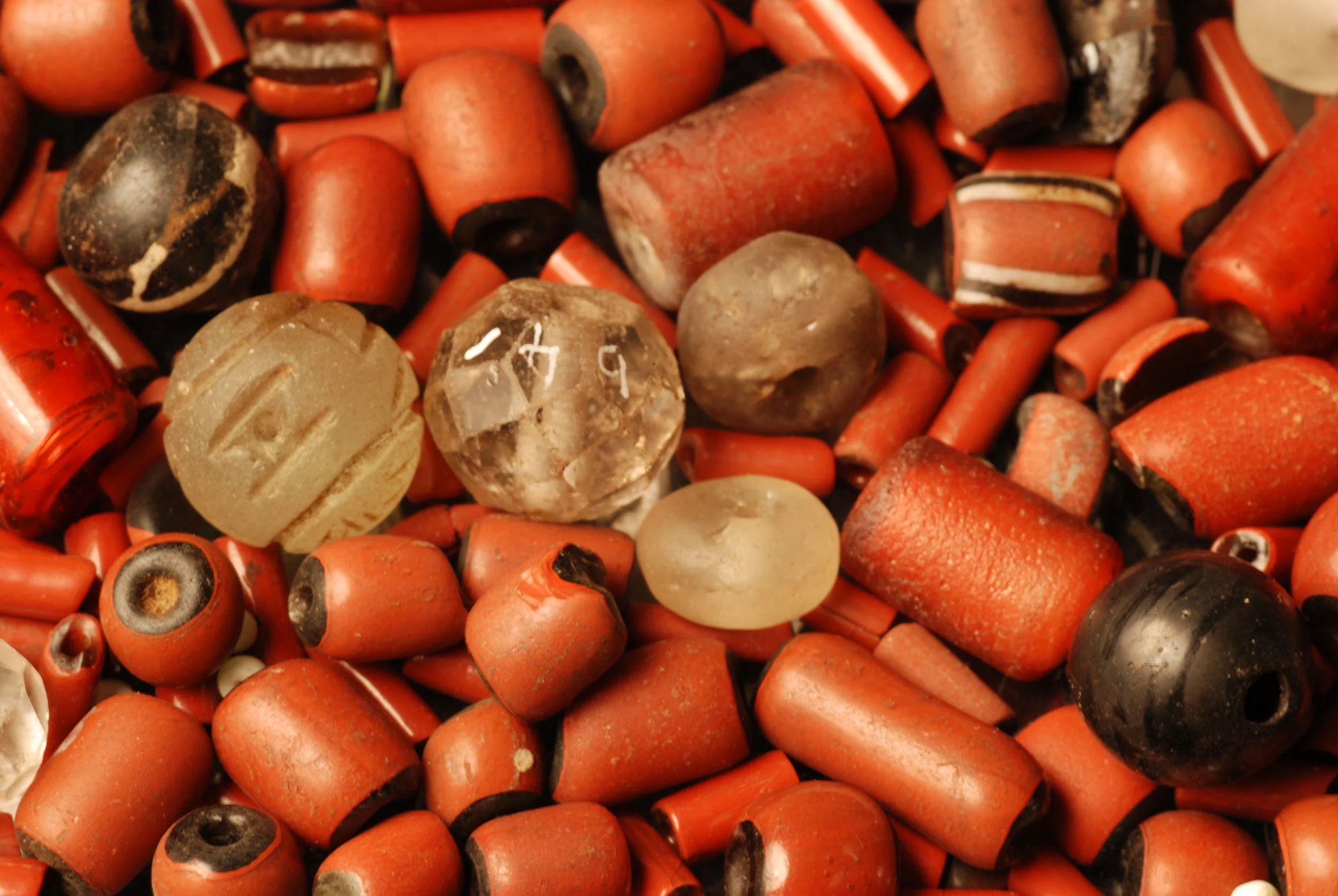The Isles of Scilly are fortunate in having one of the densest concentrations of archaeological sites in Britain, as is reflected in the Isles of Scilly Museum collections. Over 60% of the islands are classed as archaeologically important with 239 scheduled monuments in a land area of 16 square kilometres. Many of these sites cover extensive areas on the islands and sometimes, as in the case of Samson, the whole island. Often the scheduled areas contain several individual sites, resulting in over 900 separate `archaeological items'.
There are unique concentrations of certain types of monuments such as Bronze Age ritual burial monuments and extensive prehistoric field systems and settlements. The remains located in the inter-tidal areas between the present islands are evidence that they were once part of a much larger land mass which only began to take its present form as recently as early Medieval times. Unrelenting coastal erosion constantly reveals further sites, adding to the urgent need for a coherent programme of integrated recording and monitoring.
Land-based remains represent the archaeological sequence through the Bronze Age and the Iron Age, Roman, early Medieval, Tudor, Civil War, 18th, 19th and 20th century defence works. The maritime heritage of the islands is less obvious to visitors but nonetheless features an abundance of clues to the history not just of this archipelago but also of far distant lands. Under the sea around Scilly are the remains of at least 700 wrecks, many of national and international importance, which, with other submerged features, point to an astounding marine archaeological resource as yet largely unrecorded.
Both terrestrial and marine archaeological remains are a finite and irreplaceable resource and, whereas the majority are in a remarkable state of preservation, they are increasingly threatened by invasive vegetation, visitor pressure and coastal erosion.
There is still much to learn about the early history and ecology of Scilly and, apart from organised investigations, new knowledge can result from chance finds provided that they are properly recorded. Objects or fragments appear from time to time as the result of erosion but they mean little if removed from their context. If you notice anything which you think may be of interest, please do not remove or disturb it but report any finds to the Museum or to the Field Monument Warden. Please make a note of the location - a sketch map or photograph is helpful.
Undersea discoveries should also be reported but not disturbed, if full knowledge is to be obtained from historic wrecks or submerged ancient sites.
Many sites are protected under the Ancient Monuments Acts and it is an offence to disturb them or to use metal detectors. Formal permission for any investigation should be sought from the Duchy of Cornwall, the Isles of Scilly Wildlife Trust and the Council of the Isles of Scilly, who are jointly responsible for the management and the protection of the islands.
